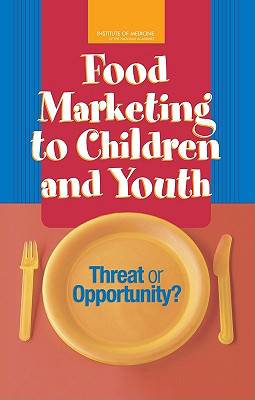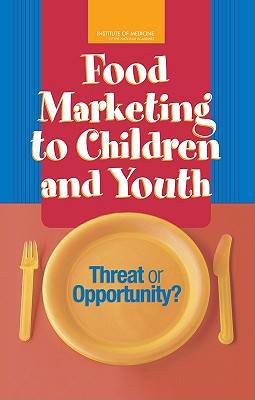
- Afhalen na 1 uur in een winkel met voorraad
- Gratis thuislevering in België vanaf € 30
- Ruim aanbod met 7 miljoen producten
- Afhalen na 1 uur in een winkel met voorraad
- Gratis thuislevering in België vanaf € 30
- Ruim aanbod met 7 miljoen producten
Zoeken
Food Marketing to Children and Youth
Threat or Opportunity?
Institute of Medicine, Board on Children Youth and Families, Food and Nutrition Board, Committee on Food Marketing and the Diets of Children and Youth
Hardcover | Engels
€ 81,45
+ 162 punten
Omschrijving
Creating an environment in which children in the United States grow up healthy should be a high priority for the nation. Yet the prevailing pattern of food and beverage marketing to children in America represents, at best, a missed opportunity, and at worst, a direct threat to the health prospects of the next generation. Children's dietary and related health patterns are shaped by the interplay of many factors--their biologic affinities, their culture and values, their economic status, their physical and social environments, and their commercial media environments--all of which, apart from their genetic predispositions, have undergone significant transformations during the past three decades. Among these environments, none have more rapidly assumed central socializing roles among children and youth than the media. With the growth in the variety and the penetration of the media have come a parallel growth with their use for marketing, including the marketing of food and beverage products. What impact has food and beverage marketing had on the dietary patterns and health status of American children? The answer to this question has the potential to shape a generation and is the focus of Food Marketing to Children and Youth. This book will be of interest to parents, federal and state government agencies, educators and schools, health care professionals, industry companies, industry trade groups, media, and those involved in community and consumer advocacy.
Specificaties
Betrokkenen
- Auteur(s):
- Uitgeverij:
Inhoud
- Aantal bladzijden:
- 536
- Taal:
- Engels
Eigenschappen
- Productcode (EAN):
- 9780309097130
- Verschijningsdatum:
- 11/05/2006
- Uitvoering:
- Hardcover
- Formaat:
- Ongenaaid / garenloos gebonden
- Afmetingen:
- 161 mm x 229 mm
- Gewicht:
- 979 g

Alleen bij Standaard Boekhandel
+ 162 punten op je klantenkaart van Standaard Boekhandel
Beoordelingen
We publiceren alleen reviews die voldoen aan de voorwaarden voor reviews. Bekijk onze voorwaarden voor reviews.








